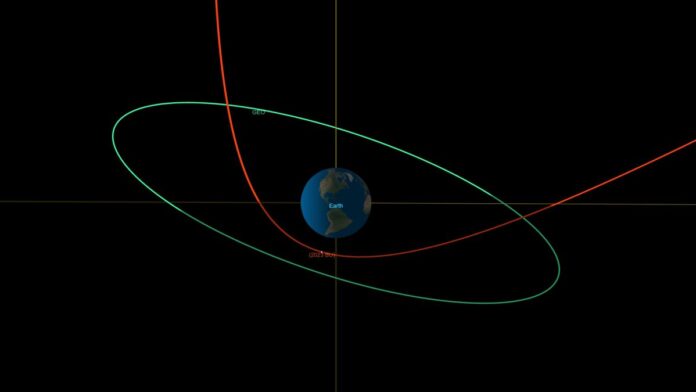A small space rock is about to make a super close pass at Earth tonight, but don’t worry — we are perfectly safe.
The space rock, named BU 2023, was first spotted hurtling toward Earth on Saturday (Jan. 21) by famed Crimea-based astronomer and astrophotographer Gennadiy Borisov, the same man who in 2018 found the first interstellar comet, which now bears his name, Borisov.
The asteroid BU 2023 is only 11.5 to 28 feet (3.5 to 8.5 meters) wide, which means it would pose no risk to our planet, even if the trajectories of the two bodies were to intersect. However, observations of BU 2023 by other astronomers that followed Borisov’s discovery confirmed that the asteroid will miss our planet by a small but safe margin of 2,240 miles (3,600 kilometers). The rock will make its closest approach above the southern tip of South America today (Jan. 26) at 7:27 p.m. EST (0027 GMT on Jan. 27), according to NASA. (opens in new tab)
Related: Asteroid apocalypse: How big must a space rock be to end human civilization?
During its closest approach, BU 2023 will be about ten times closer to the planet than the orbit of geostationary weather satellites and nearly six times closer than the orbit of navigation satellites such as the U.S. GPS constellation. This distance makes the rock’s pass the fourth closest of any asteroid ever recorded, apart from those that actually hit Earth.
With its small size, BU 2023 poses no risk to the planet at all. If it were to enter Earth’s atmosphere, it would mostly burn up, producing a stunning fireball. A few small fragments could potentially survive and fall to the ground in the form of meteorites.
The combination of the rock’s small size and the close proximity at which it will pass the much larger Earth means that 2023 BU’s trajectory will change quite a bit as the rock receives a gravitational kick from the planet, NASA said in the statement.
Calculations based on the latest observations reveal that prior to its visit to Earth, the space rock’s orbit around the sun has been “roughly circular” and took 359 days to complete. Earth’s gravity will push BU 2023 into a more elliptical orbit, which will take the rock halfway to Mars at its farthest point from the sun. This alteration will add 66 days to BU 2023’s orbital period.
The eyes of hundreds of professional and amateur astronomers are expected to follow the encounter tonight and you can witness the close approach, too. For example, Italian astronomer Gianluca Masi will share his observations online onward from 2:15 p.m. EST (1915 GMT) today on his Virtual Telescope Project channel. (opens in new tab)
Follow Tereza Pultarova on Twitter @TerezaPultarova. Follow us on Twitter @Spacedotcom and on Facebook.

